I recently purchased a pack of Agfa Ortho CP-G Plus Medical X-ray film, its something I’ve wanted to try for many years and I’d never got around to it. Recently Dave Shrimpton posted some lovely pinhole x-ray film images on his Instagram and that was a timely reminder.
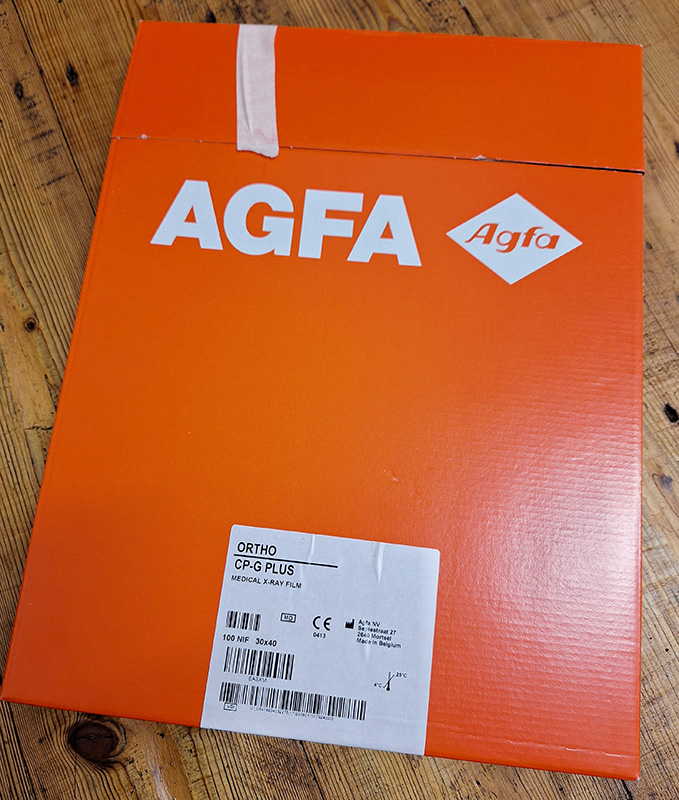
Andrew Sanderson was kind enough to sell me a box of 30x40cm Agfa Ortho CP-G Plus Medical X-Ray film for me to try. He also offered a wealth of advise for its use. Thank you Andrew.
Today I cut up a few sheets for some tests. The good thing about x-ray film is that it is orthochromatic, in this case its mostly Green sensitive, so it can be handled easily under safelight conditions. So, carefully in the darkroom with a sharp blade I cut a sheet into six 12×16 cm sheets that fitted nicely into an adapter for one of the wooden half plate holders.
Its rated at around ISO 100, so that was my first issue, its much faster than wet plate collodion. All my large format cameras and lenses lack a shutter mechanism, relying on lens cap exposures. It was also one of the brightest days so far this year. So I had to stop the lens right down to F32 and it was still 1-2 second exposures, which I can just about guesstimate with a lens cap.
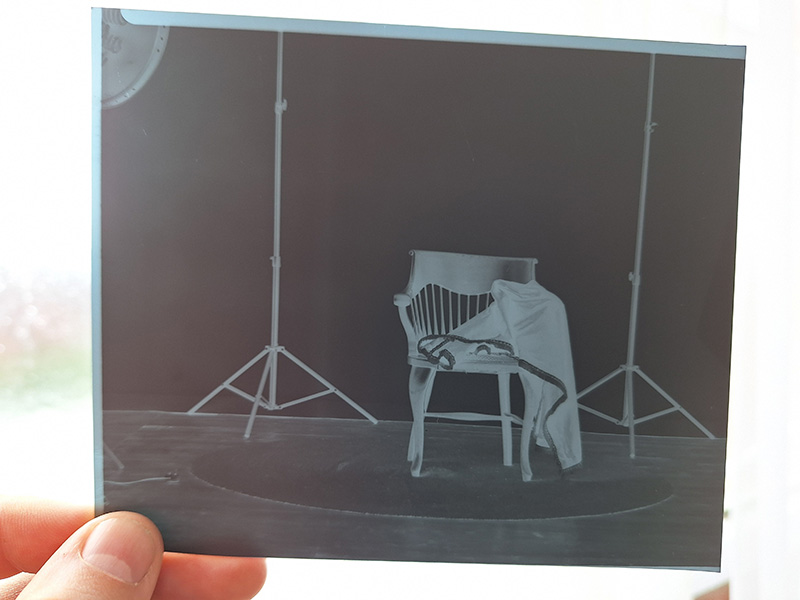
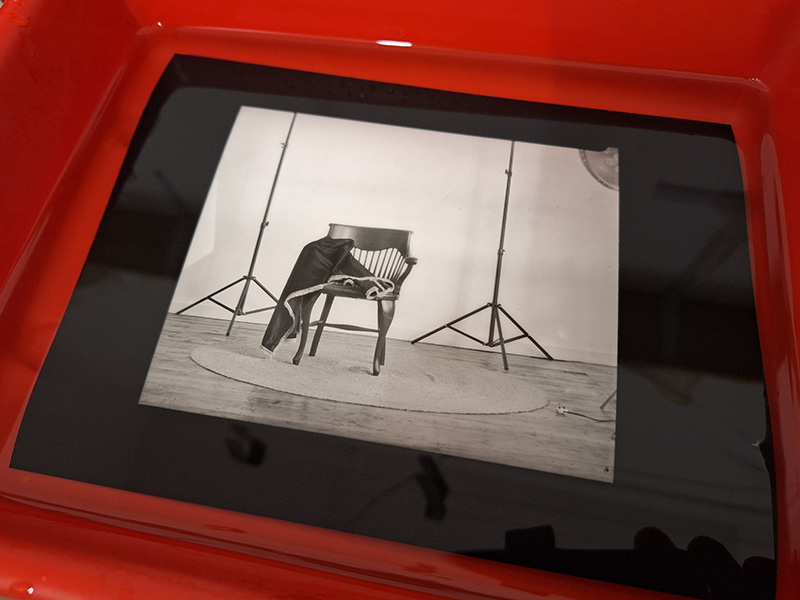
There is emulsion on both sides of the film, so the possibility of scratching has been noted online, but it wasn’t anywhere near as bad as I was expecting.
These are developed in Ilford PQ Universal but at 1:18 instead of the usual 1:9. Dev time was kept to 1 minute 45 seconds as a suggested ball park figure. A Weak stop bath and then standard Ilford Hypam fixer.
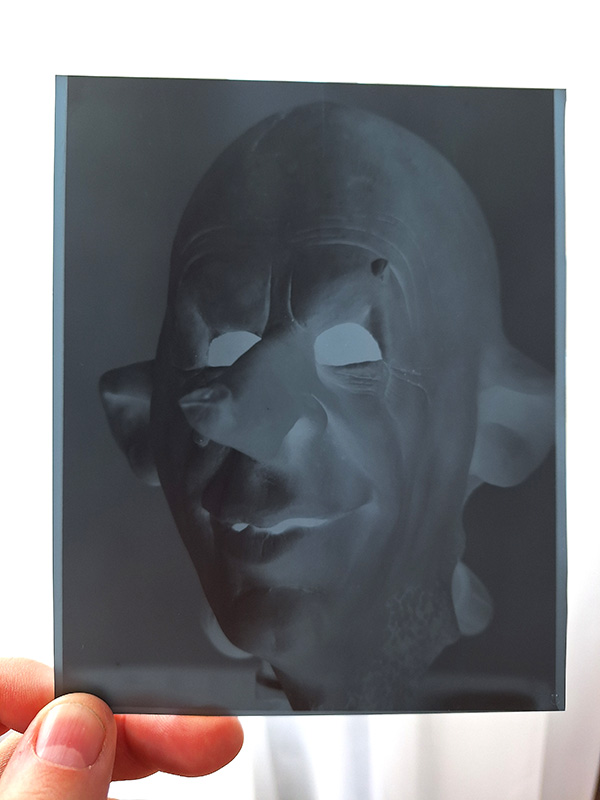
These are just contact printed on some old RC MG paper at Grade 2 and Grade 4, f5.6 for 45 seconds. Which seems a little long.
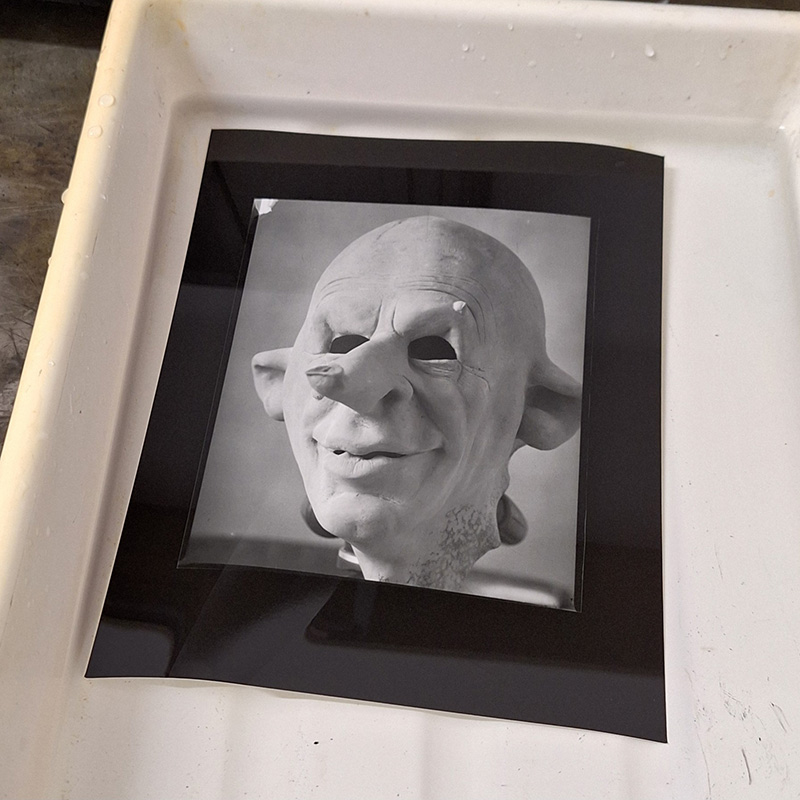
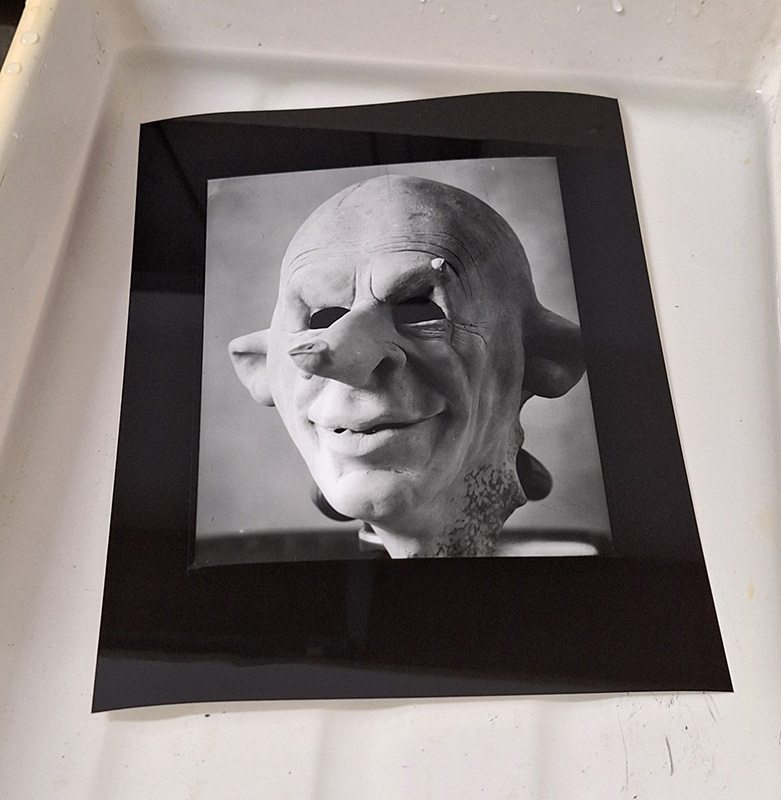
As I’m unsure how an x-ray negative is supposed to look so these will have to do , I was quite pleased with these first attempts, I just shot some stuff in the studio with window light. I have a student visiting next Friday for some work experience, so maybe we’ll try some full sheet (12×15 inch) negatives and contact printing.
Good stuff Tony. I’ve been a big fan of lith film and used it both in camera and to make enlarged negatives. I used to buy Agfa CE film 610mm wide by 60m length. Prices have rocketed and it’s getting very hard to get hold of. I’m going to give a box of this cpG film a go for my courses
Let me know how it goes Guy. I need to give it a few more tries.